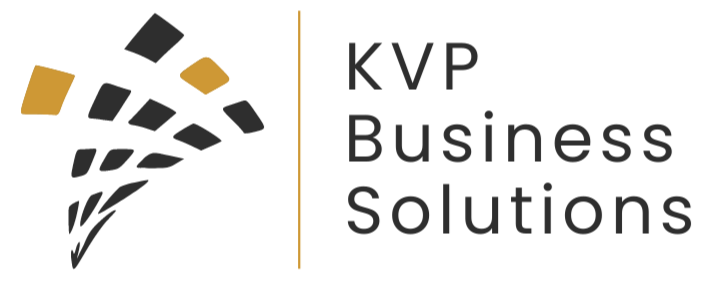Leveraging Technology for Fast-Paced Loan Processing: A Case Study of Developing a Peer-to-Peer Lending Platform
- Varun Nagpal
- Feb 23, 2024
- 3 min read
Our client, a fintech company, identified a growing demand for peer-to-peer lending services and aimed to streamline the loan processing workflow while ensuring accuracy, security, and efficiency. The company's objective was to develop a platform that could handle the entire lending process, from identity verification to fund disbursement, with minimal manual intervention. This case study explores how KVP achieved this goal through complete automation and integration of various verification and management systems.

Challenges
Manual Processes: Traditional lending practices involved extensive paperwork and manual verification processes, leading to delays and errors.
Scalability: KVP needed a solution that could handle a growing volume of loan applications without compromising speed or accuracy.
Compliance: Meeting regulatory requirements for identity verification, credit assessment, and risk management was crucial.
Integration Complexity: Integrating multiple systems, including ID verification, credit bureaus, income verification, and banking systems, posed technical challenges.
Solution
KVP adopted a comprehensive approach to automate the lending process while ensuring compliance and scalability.
Identity Verification: Implemented automated ID verification using advanced technologies like facial recognition, OCR (Optical Character Recognition), and document authentication APIs. This allowed borrowers to verify their identity remotely, reducing the need for physical documentation.
Credit Verification: Integrated with credit bureaus' APIs to fetch credit reports and scores instantly. Automated algorithms analyzed the data to assess borrowers' creditworthiness, enabling quick decision-making.
Income Verification: Employed API integration with payroll systems and banking platforms to verify borrowers' income sources and stability. Automated algorithms verified income documents and transaction history to assess borrowers' repayment capacity.
Risk Scoring: Developed proprietary risk scoring models based on machine learning algorithms, incorporating various factors such as credit history, income stability, and loan purpose. Automated risk assessment enabled faster loan approvals while maintaining accuracy.
Address Verification: Leveraged geolocation APIs and address verification services to validate borrowers' addresses. Automated checks ensured the authenticity of provided addresses, reducing the risk of fraudulent applications.
Integration with Loan Management Systems: Integrated the lending platform with robust loan management systems for end-to-end loan processing. Automated data synchronization and workflow management streamlined the entire lending lifecycle, from application submission to fund disbursement.
Bank Integrations: Established APIs with banking partners to facilitate seamless fund transfers, repayments, and account verification. Real-time integration with banking systems enabled faster transactions and enhanced user experience.
Results
Efficiency: Automation reduced manual efforts significantly, enabling KVP's small team to process loans at a much faster pace. The streamlined workflow minimized delays and improved operational efficiency.
Accuracy: Automated verification processes enhanced accuracy and reduced the risk of errors associated with manual data entry. Advanced algorithms ensured precise credit assessment and risk scoring, leading to informed lending decisions.
Scalability: The scalable architecture allowed KVP to handle a growing volume of loan applications without compromising performance. The platform could adapt to increasing demand seamlessly, supporting business expansion.
Compliance: By integrating regulatory compliance checks into the automated workflow, KVP ensured adherence to legal requirements. Real-time verification and documentation maintained transparency and compliance throughout the lending process.
Customer Satisfaction: Faster loan processing and seamless user experience improved customer satisfaction and retention. Borrowers appreciated the convenience of remote verification and quick fund disbursal, enhancing KVP's reputation in the market.
Technology Stack
The technology stack utilized by KVP for their peer-to-peer lending platform includes Ruby on Rails for robust application development and Heroku for efficient cloud hosting, deployment, and scaling. In addition, Salesforce was integrated for effective customer relationship management, ensuring seamless communication and personalized services. Furthermore, Salesforce Marketing Cloud facilitated targeted marketing campaigns and enhanced customer engagement. External integrations with credit bureaus, banking systems, geolocation services, and income verification platforms were seamlessly incorporated into the platform, enabling streamlined loan processing and compliance.
Conclusion
KVP successfully built a peer-to-peer lending platform that prioritized complete automation, leveraging technology to streamline the lending process from ID verification to fund disbursement. By integrating various verification services, credit bureaus, income sources, and banking systems, KVP's platform enabled its small team to process loans efficiently and accurately. The automated workflow not only improved operational efficiency but also ensured compliance with regulatory requirements. As a result, KVP enhanced customer satisfaction, scalability, and overall competitiveness in the peer-to-peer lending market.










This is a fantastic case study! The automation of ID verification, credit checks, and risk scoring is a game-changer for the lending industry. It’s clear how platforms like this can make online cash loans faster and more secure. Do you think this model could also work for microloans or short-term lending?
KVP’s approach to automating the peer-to-peer lending process is a game-changer for the fintech industry. By integrating advanced verification, risk assessment, and seamless banking integrations, they have significantly improved efficiency and customer satisfaction. For borrowers who need immediate access to cash, options like payday loans online same day deposit provide a fast and convenient alternative. These loans offer quick approval and instant fund disbursement, making them ideal for urgent financial needs. With fintech innovations streamlining lending processes, consumers now have more flexible and accessible financial solutions at their fingertips.